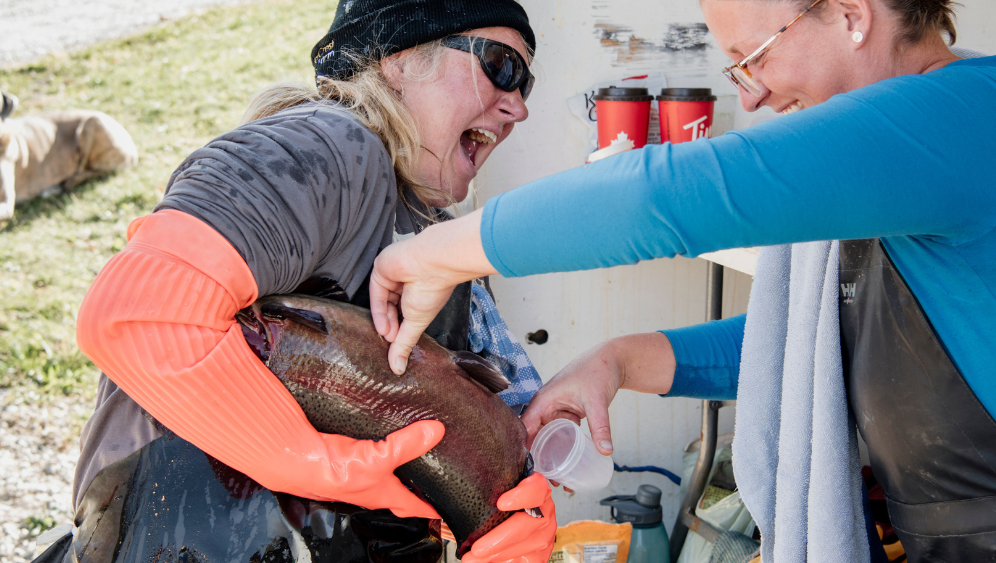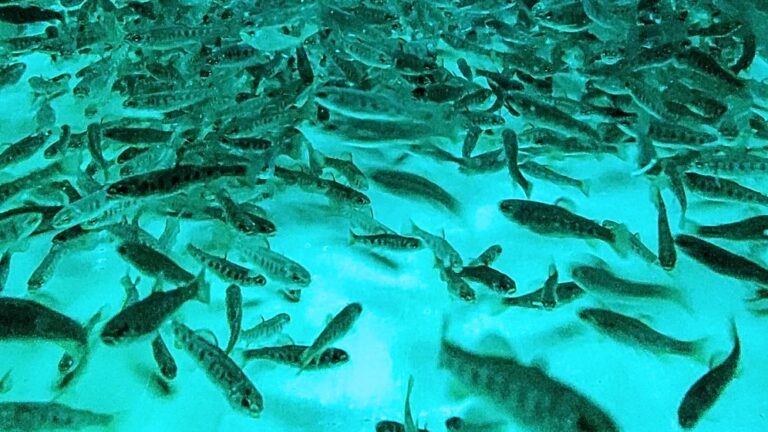
When our parents started fish farming decades ago, most people thought it was strange, risky, or just plain unheard of. Fish farming wasn’t exactly the “it” thing.
Fast forward to today and the tide has oFISHally turned.
Sustainably raised fish is now one of the trendiest proteins out there, and we could not be prouder to be part of that story. From climate-conscious foodies to families just trying to put something healthy and local on the table, more people are discovering what fish farmers have known for years.
Here’s why the cool kids are loving farmed fish.
1. Extremely Low Emissions
Fish are the most efficient livestock on the planet.
Because they live in water and do not need to fight gravity in the same way land animals do, they convert feed very eFISHently. That means they need less feed to grow, and they produce fewer emissions along the way.
On average, farmed fish emit significantly less carbon than even the most efficient land-based livestock. For anyone trying to lower their food footprint without giving up protein, fish farming is a climate win.
2. Supporting Indigenous Partnerships
Across Canada, many fish farms work in partnership with First Nations on ownership, employment, and local food security.
At farms like ours, our partnership with Sheshegwaning First Nation is at the heart of what we do. Working with the community, we create good jobs, support community-led development, and help bring more local, nutritious fish to households that have deep cultural and historical connections to the water.
It is one small but meaningful way to move toward economic reconciliation.
3. Healthy, Nutritious and CHAR-mazing
Farmed fish is a nutrition powerhouse.
It is naturally rich in omega-3 fatty acids, high-quality lean protein, and essential vitamins and minerals. All that goodness comes in a package that is light, versatile in the kitchen, and (if we do say so ourselves) CHAR-mazing on the plate.
For families trying to eat a bit healthier without giving up flavour, fish makes it easy.
4. Good for Wild Fish, Too
Here is something many people do not realize.
In places like Lake Huron and Georgian Bay, fish farms are scientifically proven to boost wild fish populations. How? By helping reverse some of the damage caused by invasive mussels.
Those mussels strip nutrients out of the water. Fish farms help restart localized food webs by reintroducing nutrients in a controlled way. That means more food in the water column, which supports everything from plankton to wild fish species.
Done properly, freshwater fish farming can be part of restoring balance, not disrupting it. Learn more.
5. Cleaner and More Controlled
Because we manage where our fish swim and what they eat, we can control a lot of things that are harder to manage in the wild.
We know what goes into their feed. We monitor water quality constantly. We can keep our fish away from many of the toxic pollutants and contaminants that wild fish may encounter in heavily industrialized or polluted environments.
The result is fish you can feel good about eating and serving.
6. Better Welfare From Hatchery to Harvest
For us, fish are not a resource to extract. They are living beings we raise for more than two years before harvest.
Fish welfare is built into every step of our work. That means:
- Designing systems that reduce stress
- Handling fish gently and only when needed
- Monitoring their health and behaviour closely
- Using humane methods at harvest
Good welfare is not just the right thing to do. It also shows up in the quality and consistency of the final product.
From “Strange Idea” to Coolest Kids in School
Who knew that one day fish farmers would be the coolest kids in SCHOOL? Our parents certainly did not predict it when they were hauling nets, fixing pipes and explaining over and over what fish farming even was.
Today, we are proud to carry that work forward in a way that is better for the planet, better for communities, and better for your dinner plate.
Thanks for helping make fish farming something to celebrate. 🌊❤️


